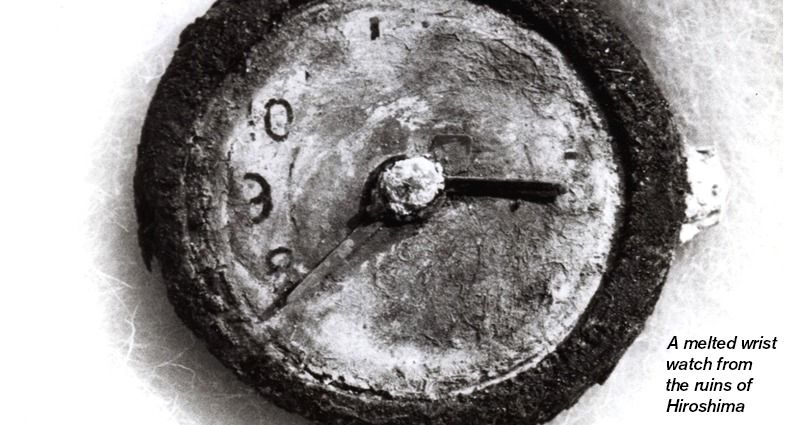Obama, Hiroshima, apologies, and the invisible victims of the atomic bombings
By Tessa Morris-Suzuki | May 25, 2016

When Barack Obama becomes the first serving US president to visit Hiroshima on May 27, there is one group of atomic bomb survivors who will certainly not be there to watch his motorcade drive through the city. These are the North Korean victims of the atomic bombing, a group whose existence remains virtually unknown and unmentioned in the heated international debates about the North Korean nuclear threat. The North Korean atomic bomb victims are not very numerous—their number in 2002 was estimated at 928, and no one knows for sure how many of them are still alive—but their forgotten story sheds light on the complex regional history of the atomic bombings and their aftermath.
In Japan itself immediately after the war, knowledge of the devastating effects of the atomic bombings of Hiroshima and Nagasaki was suppressed by censorship imposed by the Allied Occupation forces. It was only after the end of the Occupation in 1952 that Japanese people began to see graphic images of the injuries inflicted by the bombs, and become conscious of the lasting health effects of the radiation. Major Japanese movements against atomic weapons did not begin until 1954, when Japan suffered its first and only verified casualty from postwar atomic tests: the death of a fisherman on the fishing boat Lucky Dragon, exposed to fallout from a US nuclear test on Bikini Atoll. The Lucky Dragon incident brought to the surface the stories and memories of Hiroshima and Nagasaki, and sparked a mass anti-nuclear movement supported mainly (though not exclusively) by the political Left.
But the Japanese government, tied to security treaties with the United States, has generally been ambivalent about memories of the atomic bombings, and has never pressed its ally for compensation or statements of regret. Indeed, documents released by Wikileaks include a 2009 secret cable quoting a leading Japanese diplomat as arguing against a US apology. The Japanese government fears that a US apology might fuel an expansion of the Japanese anti-nuclear movement. Japan itself (particularly under the current Abe regime) has faced fierce criticism for the vagueness of its own statements about wartime atrocities inflicted by Japan, and has no desire to be shown up in an unfavorable light by a more sincere apology from the United States. During the current Obama visit, a major concern of the Abe administration will be to ensure that attention is focused on Hiroshima rather than on the current troubles in Okinawa, where an impassioned struggle is underway against the construction of offshore US military facilities on top of a coral reef which provides habitat for the critically endangered Okinawa dugong.
In China and South Korea, meanwhile, the atomic bombings have widely been remembered as the event which brought about the fall of the Japanese empire, and thus liberation from occupation or colonial rule. In 2013 the Korean JoongAng Ilbo daily newspaper provoked international controversy by publishing an opinion piece presenting the atomic bombings as divine punishment for Japan’s war crimes in Asia. But views of the issue have been growing more complex, particularly as the stories of the Korean atomic bomb victims have become better known.
In August 1945, large numbers of Korean workers, many of them brought to Japan as forced laborers, were working in Hiroshima and Nagasaki. Researchers estimate that, of 700,000 people exposed to the effects of the bombings, about ten percent were Koreans, of whom perhaps as many as 20,000 were killed outright. During the late 1950s the Japanese government began to issue Japanese survivors of the bombings with passport-sized identity documents (hibakusha techo) which gave them access to regular health checks, but by that time some 43,000 Korean survivors had returned to South Korea, where they remained unrecognized and without access to medical assistance.
The Japanese government also encouraged a mass resettlement of around 90,000 ethnic Koreans from Japan to North Korea from 1959, and these included an unknown number of atomic bomb survivors, who found themselves in a country where medical treatment outside the major cities was very limited. A joint campaign by South Korean and Japanese activists ultimately led to official recognition of South Korean victims, who began to receive hibakusha techo from 2003 (though some still remain unrecognized). But in isolated North Korea, victims still remain without outside recognition or assistance.
Obama’s visit to Hiroshima will probably not include an apology to the victims of the atomic bombing. But it is an opportunity for the US president to reiterate his commitment to a vision of a world free of nuclear weapons. With a nuclear armed China and North Korea, and the US nuclear umbrella over Japan and South Korea, the shadow of possible nuclear war looms large in East Asia. The memory of the region-wide suffering caused by the atomic bombings of Hiroshima and Nagasaki reminds us just how vital it is that this vision of nuclear disarmament should become reality.
Together, we make the world safer.
The Bulletin elevates expert voices above the noise. But as an independent nonprofit organization, our operations depend on the support of readers like you. Help us continue to deliver quality journalism that holds leaders accountable. Your support of our work at any level is important. In return, we promise our coverage will be understandable, influential, vigilant, solution-oriented, and fair-minded. Together we can make a difference.
Topics: Analysis, Nuclear Weapons














